THE PRESIDENT’S OFFICE
REGIONAL ADMINISTRATION AND LOCAL GOVERNMENT
BIOLOGY FORM TWO MID TERM TWO EXAMINATIONS
AUG/SEPT -2024
TIME: 2:30 HOURS
INSTRUCTIONS.
- This paper consists of section A, B and C with the total number of ten(10) questions
- Answer all questions in each section
- Section A carries (15) marks, section B (70) marks and section C carries (15) marks
- All writing must be in blue/black ink except drawing which must be in pencil
- Cellular phones and any unauthorized materials are not allowed in the assessment room.
SECTION A (15 Marks)
Answer all questions in this section
i. Which feature helps to strengthen and support xylem vessels?
- Thin, flexible cell walls
- Thick cell walls with lignin
- Presence of sieve plates
- Presence of companion cells
ii. The component of blood responsible for carrying oxygen is:
- Plasma
- Red blood cells
- White blood cells
- Platelets
iii. A food sample which was tested by boiling with Benedict's or Fehling's solution gave an orange precipitate. This showed that the food sample contained
- reducing sugar
- fats
- protein
- sucrose.
iv. The role of light in photosynthesis is to
- Form ATP
- Form ADP
- Cause photolysis
- Form ATP and cause photolysis
v. Movement of food down the oesophagus is aided by;
- Gravity
- Peristalysis
- Breathing
- Swallowing
vi. The type of respiration that occurs in the absence of oxygen is:
- Aerobic respiration
- Anaerobic respiration
- Cellular respiration
- External respiration
vii. Which of the following does not support the growth of micro-organism?
- Sugar
- Moisture
- Oxygen
- Warmth
viii. Which of the following apply in a balanced grassland ecosystem?
- There are more consumers than producers.
- Decomposers act on producers only.
- Producers and consumers are usually in equal numbers.
- Producers are more numerous than consumers.
ix. Which of the following is a disease caused by a protozoan?
- Amoebic dysentery
- Malaria
- Sleeping sickness
- All of the above
x. The site of protein synthesis within a cell is the:
- Ribosome
- Cell membrane
- Chloroplast
- Lysosome
2. Match the parts of the respiratory system with their functions:
| LIST A | LIST B |
|
|
SECTION B
3. a) Name the different shapes of bacteria
b) List any four advantages of bacteria
c) Outline the harmful effects of viruses.
4. (a)Differentiate between transpiration and guttation.
(b)Explain the significance of transpiration in plants.
5. (a) Draw and label the structure of mushroom
(b) Give five economic importance of Kingdom fungi
6. Briefly explain the following methods of food preservation. In each give an example of food preserved.
a) Boiling
b) Smoking
c) Salting
d) Pickling
e) Drying
7. Describe the process of gaseous exchange in plants through stomata.
8. a) Briefly explain how the food moves down the alimentary canal
b) Explain the adaptations of the stomach in the process of digestion
c) Mention the role the following in digestion
i) Hydrochloric acid
ii) Pepsin
iii) Rennin
iv) Mucus.
9. What is the role of the lymphatic system in maintaining fluid balance?
SECTION C
10. Describe the process of blood clotting.
FORM TWO BIOLOGY EXAM SERIES 182
FORM TWO BIOLOGY EXAM SERIES 182
PRESENT’S OFFICE, REGIONAL ADMINISTRATION
AND LOCAL GOVERNMENT
SECONDARY EXAMINATION SERIES
COMPETENCY BASED SERIES
BIOLOGY FORM TWO
MID-TERM EXAMS – AUGUST – 2023
TIME: 2:30 HRS
INSTRUCTIONS
- This paper consists of sections A, B and C with a total of ten (10) questions.
- Answer all questions
- Section A and C carry fifteen (15) marks each and Section B carry seventy (70) marks.
- All writing must be in blue or black ink except drawing which must be in pencil.
- Cellular phones and any unauthorized materials are not allowed in the assessment room.
SECTION A (15 MARKS)
- For each of questions (i) – (x) choose the best alternatives from choices given.
- a student observed a cell with district cell wall flagella and nuclear materials scattered on cytoplasm.
The organism was mostly obtained from kingdom
- Animalia
- Plantae
- Fungi
- Monera
- Kisura has developed hiccup, What is the best to help her
- Let him breathe on a paper bag
- Let him breathe on a plastic bag
- Pinch nose and breathe through mouth
- Applying a cold compress to the person chest
- The best way to deal with electronic waste in rural and Urban areas by
- Bury under the ground
- Burn in rubbish pits
- Give to street electrician
- Recycle to other products
- A form one student was given honey by his teacher, what sense organs will she use is observe the honey sample?
- The tongue and eye only
- The eye, tongue and mouth
- Tongue, skin, nose and eyes only
- The tongue, nose, and eyes only
- Which of the following structures in the site for production of energy in plants
- Ribosome’s
- Mitochondria
- Chloroplast
- Nucleus
- Vacuole
- Anifa burned waste in her home completely and become ash. Which method of waste disposal is this?
- Incineration
- Sanitation
- Disposing
- Recycling
- Salivary Amylase can work only in the mouth not in stomach because
- Alkalinity in stomach is not favorable for enzyme to work
- In stomach it becomes too diluted
- Acidity in stomach contents is not a favorable medium to work on it
- There is no digestion since stomach stores food Temporally
- Yeast is economically important because it is used in baking process. This member of fungi is found in phylum
- Ascomycota
- Zygomycota
- Basidiomycota
- Eumycota
- What will happen if the xylem vessel is destroyed in greens plants
- Transport of manufactured food will stop
- Absorption of water in plant body will stop
- Transport of water and mineral salts will stop
- Absorption of nutrients from soil will stop
- An individual Obtain artificial active immunity through
- Sucking her mother’s milk collect colostrums
- Vaccination /immunization
- Antibodies from another mother
- Antibodies from his/her mother
- Match the phase in LIST A with correct term from LIST B which best fits description of a Fuel
| LIST A | LIST B |
|
|
SECTION B: (70 Marks)
Answer all questions
- Distinguish between gutation and Transpiration
- State four significance of Transpiration in plants
- Name three area in plant when gaseous exchange occur
- (a)Name the type of teeth used for each of the following
- piercing and killing Prey
- Grinding food
- Biting food
(b)Below is diagram of human digestive system
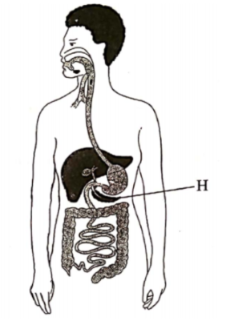
- Label Y on diagram where enzyme amylase is produced
- Beside the digestive role, explain one other function of the part labelled H.
- What will happen if gallbladder of human body is destroyed?
- (a)The chart below illustrates how respiratory gases are transported in human blood
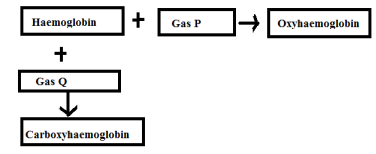
- Identify gas Q
- Explain effect of Carboxyhaemoglobin in blood circulation
- Explain the advantage Oxyhaemoglobin has over carboxyhaemoglobin
(b)(i) Differentiate cell specialization from cell differentiation
(ii)Explain how the cells are adapted to their function
- Root hair cell
- Nerve cell
- Guard cell
- Sperm cell
- (a)Name the largest blood vessels
(b)Explain why arteries have large muscular wall than varies
(c)State three ways in which blood capillaries are structurally adapted to their function
- (a) State two characteristics of living things illustrated in photograph below ;
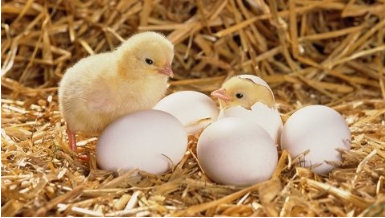
(b)The photograph below represents a plant in a certain division
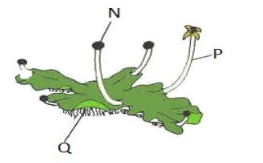
- Name the division to which the plant belongs
- What reference to the photograph, state three observable features of the Division name above.
- Name the parts labelled N and P
(c)Explain how part labelled Q is adapted to its functions
- (a)Differentiate autotrophic nutrition from heterotrophic nutrition
(b)Explain why
- Vitamin B and C are needed regularly
- We should include roughage in our diets even though it is not nutrient
- We should take adequate amount of water
- (a)Explain the principles behind the following method of food preservation
- Canning
- Freezing
- Boiling
(b) State adaptations of ileum in food absorption
- Describe how mammalian heart to adapted to its function.
FORM TWO BIOLOGY EXAM SERIES 158
FORM TWO BIOLOGY EXAM SERIES 158
THE PRESIDENT’S OFFICE
REGIONAL ADMINISTRATIVE AND LOCAL GOVERNMENT
FORM TWO EXAMINANTIONS SEPT 2022
NEW NECTA FORMAT
Time: 02:30 Hours
INSTRUCTIONS
1. This paper consists of sections A, B and C with a total of ten (10) questions.
2. Answer all questions in sections A and B and C.
3. Section A carries 15 marks, section B seventy (70) marks and section C (15) marks.
4. All writing must be in black or blue ink except drawings which must be in pencil.
5. Cellular phones and any unauthorized materials are not allowed in the assessment room.
6. Write your Assessment Number at the top right corner of every page.
SECTION A (15 Marks)
Answer all questions in this section.
1. For each of the item (i)-(x), choose the correct answer from among the given alternatives and write its letter in the box provided
- A room designed for experiments and observation of samples is known as
- Hospital
- Classroom
- Laboratory
- Pharmacy
- Which substance can be tested by using Benedict’s solution
- Reducing sugar
- Starch
- Lipids
- Protein
- The highest rank of classification is known as
- Class
- Species
- Kingdom
- Phylum
- If a child have a swollen abdomen thin arms and leg and weak and brownish hair is likely to have which nutritional disorder
- Marasmus
- Kwashiorkor
- Obesity
- Rickets
- The main reason for keeping food on refrigerators is to make it
- Cold.
- Last longer
- Sweet
- Soft
- Absorption of food in alimentary canal take place in the
- Colon
- Duedunum
- Stomach
- Ileum
- Which of the following is NOT a field of study related to biology
- Agriculture
- Nutrition
- Astrology
- Medicine
- COVID 19 is a disease which caused by
- Virus
- Amoeba
- Bacteria
- Plasmodium
- Which of the following enzymes is produced in the Mouth
- Lipase.
- Salivary amylase
- Sucrose.
- Trypsin
- Which of the following is NOT a component of first aid kit?
- Bandage
- Microscope
- Soap
- Panadol
2. Match the phrase in LIST A with responses in LIST B by writing the letter of the
correct response in LIST B below the corresponding phrase number of LIST A in table provided.
| LIST A | LIST B |
|
| A. Cholera
|
Answers
| LIST A | | | | | |
| LIST B |
|
|
|
|
|
SECTION B (70 Marks)
Answer all questions in this section.
3. For each of the items (i)-(x) write TRUE if the statement is correct or FALSE if the statement is incorrect in the spaces provided.
i. All green plants are decomposers………………………………………………………
ii. The use of unsterilized equipments can lead to HIV/AIDS transmission………...
iii. Fern plant belong to division pteridophyta……………………………………….………
iv. Salting and drying are modern method of food preservation……………..….………
v. Syphilis is a communicable disease……………………………………………………….
vi. Handlens makes object look bigger than normal size……………………………......
vii. Epiglottis is the structure that allow entrance of food to the trachea……………
viii. Plant cell lack chloroplast…………………………………..………………………..
ix. Good manners involves talking while eating………………….…………………………
x. Calcium help to strengthen teeth and bone…………………………………………….
4. (a) Complete each of the following statements by writing the correct answer in the spaces provided:
i. Magnifies the specimen under observation…………………………………..
ii. Raises or lowers the body tube in order to bring the image into sharp focus……
iii. Surface on which the specimen to be observed is placed……………………………
iv. Reflects and directs light to the specimen under observation………………………
v. Regulate amount of light passing from the mirror to the condenser………………
(b) How do the following factors affect the rate of photosynthesis?
(i) Chlorophyll
(ii) Sunlight
(iii) Carbon dioxide
5. (a) Write the meaning of the following words:
i.Biology ……………………………………………………………………………………….…………………………………………………………………………………………………………………………………………………………………………………………………….............................................
ii. Zoology …………………………………………………………………………………………………
…………………………………………………………………………………………………
(b) Why do we study Biology? Give two reasons.
i. …………………………………………………………………………………………………
ii. …………………………………………………………………………………………………
6. The figure below represents a diagram of a simple animal cell. Study the diagram then answer the questions that follows:

a) Name the part labelled with letters A, B and C
A …………………………………………………………………………………………
B …………………………………………………………………………………………
C …………………………………………………………………………………………
b) Give TWO functions of the part labelled C
(i) …………………………………………………………………………………………….
(ii) …………………………………………………………………………………………….
c) Give three differences between animal cell and plant cell.
| Animal cell | Plant cell |
|
|
|
|
|
|
|
|
|
7. (a) Define the following terms:
i.Ecosystem………………………………………………………………………………………………………………………………………………………………………………………………………………………………………………………………………………………………………
ii. Population
………………………………………………………………………………………………………………
………………………………………………………………………………………………………………
iii. Ecology
………………………………………………………………………………………………………………………………………………………………………………………………………………………………
iv.Habitat ……………………………………………………………………………………………………………………………………………………………………………………………………………………
(b) Explain the role of each of the following organisms in the ecosystem.
i.Decomposers…………………………………………………………………………………………………………………………………………………………………………………………………….
ii. Producers ………………………………………………………………………………………………………………………………………………………………………………………….
(c)(i) Construct a food web using the following organism, maize, stolk bore, salamanda, mouse,bacteria snake and hawk
(ii) From the food web above in (c) (i) identify the following:
a. Producer.................................................
b. Decomposer.................................................
8. If you put a piece of bread in a wet cupboard after a few days the breast will be covered with organism called fungi.
a) Give the common name of these fungi which grow bread
……………………………………………………………………………………………
b) Outline the three phyla of the Kingdom fungi
i. …………………………………………………………………………………………………
ii. …………………………………………………………………………………………………
iii. ………………………………………………………………………………………………
c) Outline five advantages of Kingdom fungi
i. ………………………………………………………………………………………………
ii. ……………………………………………………………………………………………….
iii. ……………………………………………………………………………………………….
iv. ………………………………………………………………………………………………..
v. ……………………............……………………… ……………………...................................
9.(a)Define The Following
- Capillarity……………………............……………………… ……………………...................................
- Transpiration pull
……………………............……………………… ……………………............................................ ……………………............……………………… ……………………...................................
- Blood circulation
……………………............……………………… ……………………...................................
…………………………………………………………………………………………………………………………………………………
- Blood transfusion
……………………............……………………… ……………………...................................
………………..…………………………………………………………………………………… …………………………………
(b) Design a diagram to illustrate the events that occurs during exhalation
SECTION C 15 MARK
Answer only one question from this section
10. Tuberculosis (TB) is one of the dangerous communicable diseases. Suppose you have been assigned to move around the rural Tanzanian areas to educate people about TB, write down the:-
- Causes,
- Ways of transmission,
- Symptoms,
- Effects and
- Control measures of TB.
…………………………………………………………………………………………………………………………………………………………………
…………………………………………………………………………………………………………………………………………………………………
…………………………………………………………………………………………………………………………………………………………………
…………………………………………………………………………………………………………………………………………………………………
…………………………………………………………………………………………………………………………………………………………………
…………………………………………………………………………………………………………………………………………………………………
…………………………………………………………………………………………………………………………………………………………………
…………………………………………………………………………………………………………………………………………………………………
…………………………………………………………………………………………………………………………………………………………………
…………………………………………………………………………………………………………………………………………………………………
…………………………………………………………………………………………………………………………………………………………………
…………………………………………………………………………………………………………………………………………………………………
…………………………………………………………………………………………………………………………………………………………………
…………………………………………………………………………………………………………………………………………………………………
…………………………………………………………………………………………………………………………………………………………………
…………………………………………………………………………………………………………………………………………………………………
…………………………………………………………………………………………………………………………………………………………………
…………………………………………………………………………………………………………………………………………………………………
…………………………………………………………………………………………………………………………………………………………………
…………………………………………………………………………………………………………………………………………………………………
…………………………………………………………………………………………………………………………………………………………………
…………………………………………………………………………………………………………………………………………………………………
…………………………………………………………………………………………………………………………………………………………………
…………………………………………………………………………………………………………………………………………………………………
…………………………………………………………………………………………………………………………………………………………………
…………………………………………………………………………………………………………………………………………………………………
…………………………………………………………………………………………………………………………………………………………………
…………………………………………………………………………………………………………………………………………………………………
…………………………………………………………………………………………………………………………………………………………………
…………………………………………………………………………………………………………………………………………………………………
…………………………………………………………………………………………………………………………………………………………………
…………………………………………………………………………………………………………………………………………………………………
…………………………………………………………………………………………………………………………………………………………………
…………………………………………………………………………………………………………………………………………………………………
…………………………………………………………………………………………………………………………………………………………………
…………………………………………………………………………………………………………………………………………………………………
…………………………………………………………………………………………………………………………………………………………………
…………………………………………………………………………………………………………………………………………………………………
…………………………………………………………………………………………………………………………………………………………………
…………………………………………………………………………………………………………………………………………………………………
…………………………………………………………………………………………………………………………………………………………………
…………………………………………………………………………………………………………………………………………………………………
…………………………………………………………………………………………………………………………………………………………………
…………………………………………………………………………………………………………………………………………………………………
…………………………………………………………………………………………………………………………………………………………………
…………………………………………………………………………………………………………………………………………………………………
…………………………………………………………………………………………………………………………………………………………………
…………………………………………………………………………………………………………………………………………………………………
…………………………………………………………………………………………………………………………………………………………………
…………………………………………………………………………………………………………………………………………………………………
…………………………………………………………………………………………………………………………………………………………………
…………………………………………………………………………………………………………………………………………………………………
…………………………………………………………………………………………………………………………………………………………………
…………………………………………………………………………………………………………………………………………………………………
…………………………………………………………………………………………………………………………………………………………………
…………………………………………………………………………………………………………………………………………………………………
…………………………………………………………………………………………………………………………………………………………………
…………………………………………………………………………………………………………………………………………………………………
…………………………………………………………………………………………………………………………………………………………………
…………………………………………………………………………………………………………………………………………………………………
…………………………………………………………………………………………………………………………………………………………………
…………………………………………………………………………………………………………………………………………………………………
…………………………………………………………………………………………………………………………………………………………………
…………………………………………………………………………………………………………………………………………………………………
…………………………………………………………………………………………………………………………………………………………………
…………………………………………………………………………………………………………………………………………………………………
…………………………………………………………………………………………………………………………………………………………………
…………………………………………………………………………………………………………………………………………………………………
…………………………………………………………………………………………………………………………………………………………………
…………………………………………………………………………………………………………………………………………………………………
…………………………………………………………………………………………………………………………………………………………………
…………………………………………………………………………………………………………………………………………………………………
…………………………………………………………………………………………………………………………………………………………………
…………………………………………………………………………………………………………………………………………………………………
…………………………………………………………………………………………………………………………………………………………………
…………………………………………………………………………………………………………………………………………………………………
…………………………………………………………………………………………………………………………………………………………………
…………………………………………………………………………………………………………………………………………………………………
…………………………………………………………………………………………………………………………………………………………………
……………………………………………………………………………………………………………………………………………………………
FORM TWO BIOLOGY EXAM SERIES 118
FORM TWO BIOLOGY EXAM SERIES 118
THE PRESIDENT’S OFFICE
MINISTRY OF EDUCATION, REGIONAL ADMINISTRATION AND LOCAL GOVERNMENT
COMPETENCE BASED SECONDARY EXAMINATION SERIES
BIOLOGY MID TERM EXAMINATION
FORM TWO-AUG/SEPT 2021
Time: 2:30Hours
Instructions.
- This paper consists of section A, B and C with a total of 11 questions
- Answer all questions in section A and B and ONE question from section C.
- Section A carries 30 marks, section B 50 marks and section C 20 Marks
- All answers should be written in the spaces provided.
- All communication devices, calculators and any unauthorized material are not allowed in examination room.
- Write your number on every page of your answer booklet.
SECTION A (30 Marks)
Answer All questions in this section.
- For each of the items (i)-(x), choose the correct answer from the alternatives given.
(i) In the human digestive system the stomach is known as:
- a tissue
- a cell
- an organ
- an organism
(ii)An organism with a rigid protective wall made up of chitin material is a representative of which Kingdom?
A. Fungi
B. Monera
C. Plantae
D. Protoctista
(iii)The disease and disorder of the human circulatory system includes:
A. Arteriosclerosis and heart burn
B. Blood pressure and sickle cell anemia
C. Blood pressure and oedema
D. Leukemia and heart burn.
(iv)The product of anaerobic respiration process in animals is:
A. uric acid
B. lactic acid
C. sulfuric acid
D. hydrochloric acid
(v) The ability of the human body to resist infections caused by micro organisms is known as:
- immunity
- inoculation
- treatment
- vaccination
(vi) Insufficient food rich in protein to children especially infants result into nutritional deficiency disease called.
- Marasmus
- Obesity
- Kwashiorkor
- Ricketts
(vii) The structure of a leaf that allows oxygen and carbon dioxide to diffuse into and out of the leaf during gaseous exchange is known as:
- cuticle
- epidermis
- mesophyll
- stomata
(viii) The following waste can be recycled except:
- aluminium cans
- contaminated syringes
- glass jars and bottles
- papers and cardboards
- plastic bags
(ix) The following are the products of respiration except:
- alcohol, carbon dioxide, and energy
- alcohol, energy, and lactic acid
- carbon dioxide, energy, and lactic acid
- carbon dioxide, energy, and water
- glucose, oxygen and water
(x)Three phyla of kingdom fungi are:
- Ascomycota, Basidiomycota and Eumycota
- Ascomycota, Basidiomycota and Zygomycota
- Ascomycota, Bryophyta and Eumycota
- Ascomycota, Bryophyta and Euglenophyta
- Ascomycota, Euglenophyta and Zygomycota
2.For each of the items (i) - (x), write True if a statement is correct or False if a statement is not correct in the space provided.
(i) Botany is the study of animals
(ii)Gaseous exchange in mammals takes place in the nose and mouth
(iii)One enzyme can act on several food substances ...............
(iv)During inhalation the ribs move upwards and outwards...............
(v) Anemia is a condition in which a patient has few erythrocytes .
(vi) Landfill is a way of disposing domestic wastes ...............
(vii)Amylase is an enzyme which acts on protein ...............
(viii)Consumers in the ecosystem produce their own food...............
(ix)Syphilis is a communicable disease ...............
(x)All bacteria are harmful to man ...............
3. Match each item in List A with a correct response in List B by writing its letter bellow the number of the corresponding item in the table provided.
| LIST A | LIST B |
| (i)A vascular tissue used for transportation of water and mineral salts towards the leaf. (ii)A small pore which allows gaseous exchange into and out of the leaf. (iii)A water proof material which protects the leaf from injury and excessive water loss. (iv)A bean shaped structure for effective control of water loss and gaseous exchange. (v)A broad part of a leaf which increases large surface area for absorption of light and carbonidioxide. | A. Stomata Sponge mesophyll B. Epidermis Cuticle C. Lamina D. Petiole E. Vein F. Midrib G. Margin H. Cross Mesophyll I. Apex J. Guard cell K. Phloem L. Xylem M. Palisade N. Mesophyll |
4. Complete each of the following statements by writing the correct answer in the spaces provided.
- The largest rank in classification is called.................................
- Name the agent that transmits bilharzia....................................
- The blood vessel that transports manufactured food from intestines into the liver
- Smallest structure where gaseous exchange takes place....
- The product of anaerobic respiration in animals.............
SECTION B (50 Marks)
Answer all questions in this section.
5.(a) What is the difference between natural and artificial classifications?
(b)Explain why the artificial system of classification is not good.
![]() Mention two disadvantages of bacteria.
Mention two disadvantages of bacteria.
6.(a) What is natural environment?
(b)Explain the importance of the natural environment.
(c)Explain two significances of food chains and food webs in real life situation.
7.(a) Explain the uses of the following First Aid kit components:
(i)Scissors
(ii)Gauze
(iii)Adhesive plaster
(iv)Iodine tincture
(b) Outline the procedure of giving First Aid to a victim of nose bleeding.
(c) Explain the importance of giving First Aid.
5. The photograph below represents a plant in a certain Division.
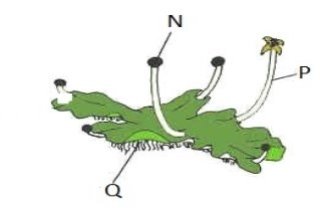
(a) (i) Name the Division to which the plant belongs.
(ii) With reference to the photograph, state three observable features of the Division named in a (i) above.
(b) Name the parts labelled N and P.
(c) Explain how the part labelled Q is adapted to its functions.
9. (a) State the effect of movement of the diaphragm muscles during inhalation in mammals
(b) State two structural adaptations of leaves that maximise efficiency in gaseous exchange.
SECTION C
10. Write an essay on malaria using the following guidelines:
- Cause
- Transmission
- Symptoms

- Effects
- Preventive measures
11. Explain six factors which affect the rate of transpiration in plants.
FORM TWO BIOLOGY EXAM SERIES 64
FORM TWO BIOLOGY EXAM SERIES 64
THE PRESIDENT'S OFFICE
MINISTRY OF REGIONAL GOVERNMENT AND LOCAL GOVERNMENT
AUGUST-SEPTEMBER EXAMINATION SERIES
BIOLOGY FORM-2
2020
TIME: 2:30 HRS
Instructions.
- This paper consists of sections A, B and C with a total of eleven (11) questions.
- Answer all questions in section A and B and one (1) question from section C
- All writing must be in blue or black ink except drawing which must be in pencil.
- Calculators, cellular phones and any unauthorized materials are not allowed in the examination room.
- Write your Examination Number at the top right corner of every page.
SECTION A (30 Marks)
Answer all questions in this section.
(i)The following are methods involved when scientists study things systematically except:
- Identifying the problem
- Guess the conclusion
- Formulating hypothesis
- Experimentation
(ii)Which part of a microscope is responsible for magnification of a specimen?
- Mirror
- Eyepiece
- Stage
- Base
(iii)Which step will you first take when giving First Aid to a bus accident victim who has severe bleeding?
- Wash the wound with plenty of water to remove blood.
- Loosen the tightened clothes to supply oxygen to the victim.
- Use your finger to apply pressure direct to the bleeding point.
- Ask the person to go to hospital immediately.
(iv)A viral disease transmitted through sexual intercourse is known as.
- gonorrhoea
- typhoid
- AIDS
- small pox
(v)In the human digestive system the stomach is known as:
- a tissue
- a cell
- an organ
- an organism
(vi) Which of the following is not a proper method of waste disposal?
- Use of landfill
- Make pit latrine
- Recycling of materials
- Burning plastic waste at home
(vii)An organism with a rigid protective wall made up of chitin material is a representative of which Kingdom?
- Fungi
- Monera
- Plantae
- Protoctista
(viii)The disease and disorder of the human circulatory system includes:
- Arteriosclerosis and heart burn
- Blood pressure and sickle cell anemia
- Blood pressure and oedema
- Leukemia and heart burn.
(ix)The end product of fat/lipids in digestion process is called:
- Amino acid
- Peptide
- Glucose
- Fatty acids and glycerol
(x)The product of anaerobic respiration process in animals is:
- uric acid
- lactic acid
- sulfuric acid
- hydrochloric acid
2.Write TRUE if the statement is correct or FALSE if the statement is not correct.
i) A microscope is an instrument used to observe small objects which cannot be seen by using our naked eyes .........
(ii) Plant cells possess cellulose cell walls while animal cells do not .........
(iii)We can use dry wooden stick to move a victim of electric shock from the ![]() source of electric current. .........
source of electric current. .........
(iv)Botanists study both plants and animals .........
(v)It is safe to warm the room by using charcoal when people are sleeping the whole night inside the room .........
(vi) Onions store food in leaves while carrots store food in root tubers .........
(vii) Gaseous exchange in fish takes place through spiracles .........
(viii)Materials which can be recycled include aluminium cans and magazines
(ix)All living things are made up of small units known as cells .........
(x)Biology is the study of non-living things .........
3.Match the phrases in List A with the responses in List B by writing the letter of the correct response from List B below the item number of List A in the table provided.
| LIST A | LIST B |
| (i) A term used for organisms with four chambered stomach. (ii) Malnutritional disorder caused by deficiency of protein in children. (iii)Enzymes responsible for digestion of protein. (iv)Malformation of bones caused by deficiency of vitamin "D" in the diet. (v)Failure to see in dim light due to deficiency of vitamin A" in a diet. Painful sensation caused by regurgitation of stomach contents. (vii) Bleeding of gums and poor healing of the wound due to deficiency of vitamin "C". (viii)Painful sore in the lining of the digestive system. (ix)The substance responsible for coagulation of milk. (x)A person has loss of appetite, and loss of |
|
SECTION B
4.(a) List the major groups of living organisms. (Mention 5)
(b)Figure 1 represents an organism which feeds on dead organic matter. Study the diagram carefully then answer the questions that follow:
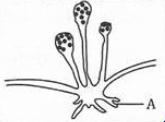
(i)What is the name of organisms in Figure 1?
(ii)Name the part labelled with letter A.
(iii) Mention the Phylum in which the organism you named in (a) (i) belongs.
(c) Outline two disadvantages of Kingdom Fungi.
5.What do you understand by the term "Personal hygiene"?
(b) State four principles of personal hygiene. (c) State four principles of good manners:
6.Define the following terms:
(i) Diffusion (ii) Osmosis
(b) Explain why a red blood cell immersed in a low concentrated solution bursts?
(c) State one function of each of the following blood cells:
(i) Red blood cells (Erythrocytes) (ii) Platelets
7.(a) What is First Aid?
(b) List four components of the First Aid Kit.
(c) State the procedures of giving First Aid to a person who has been bitten by a snake.
8.Define the terms "food chain" and "food web" as used in Biology.
(b) Construct a food chain by using the following organisms:
Grasses, Snake, Grasshopper, Frog.
(c) Explain the significance of food chain and food web in the real life situation. (Mention 2)
SECTION C
9. Explain the causes, mode of transmission and prevention measures of cholera as one of the communicable diseases in Tanzania.
10. Describe the causes, mode of transmission and prevention measures of Tuberculosis disease in the respiratory system.
FORM TWO BIOLOGY EXAM SERIES 30
FORM TWO BIOLOGY EXAM SERIES 30
Hub App
 For Call,Sms&WhatsApp: 255769929722 / 255754805256
For Call,Sms&WhatsApp: 255769929722 / 255754805256
 For Call,Sms&WhatsApp: 255769929722 / 255754805256
For Call,Sms&WhatsApp: 255769929722 / 255754805256







